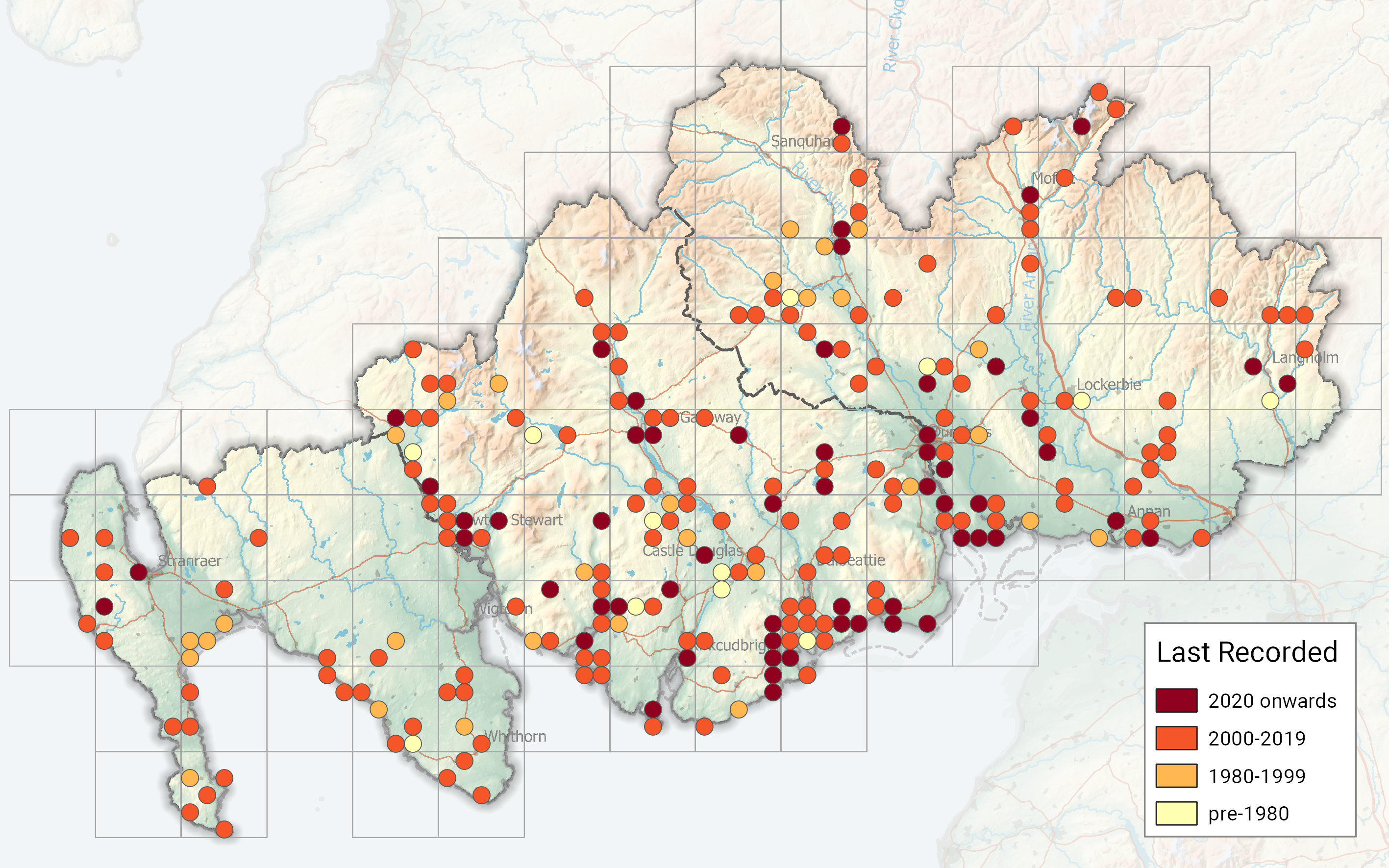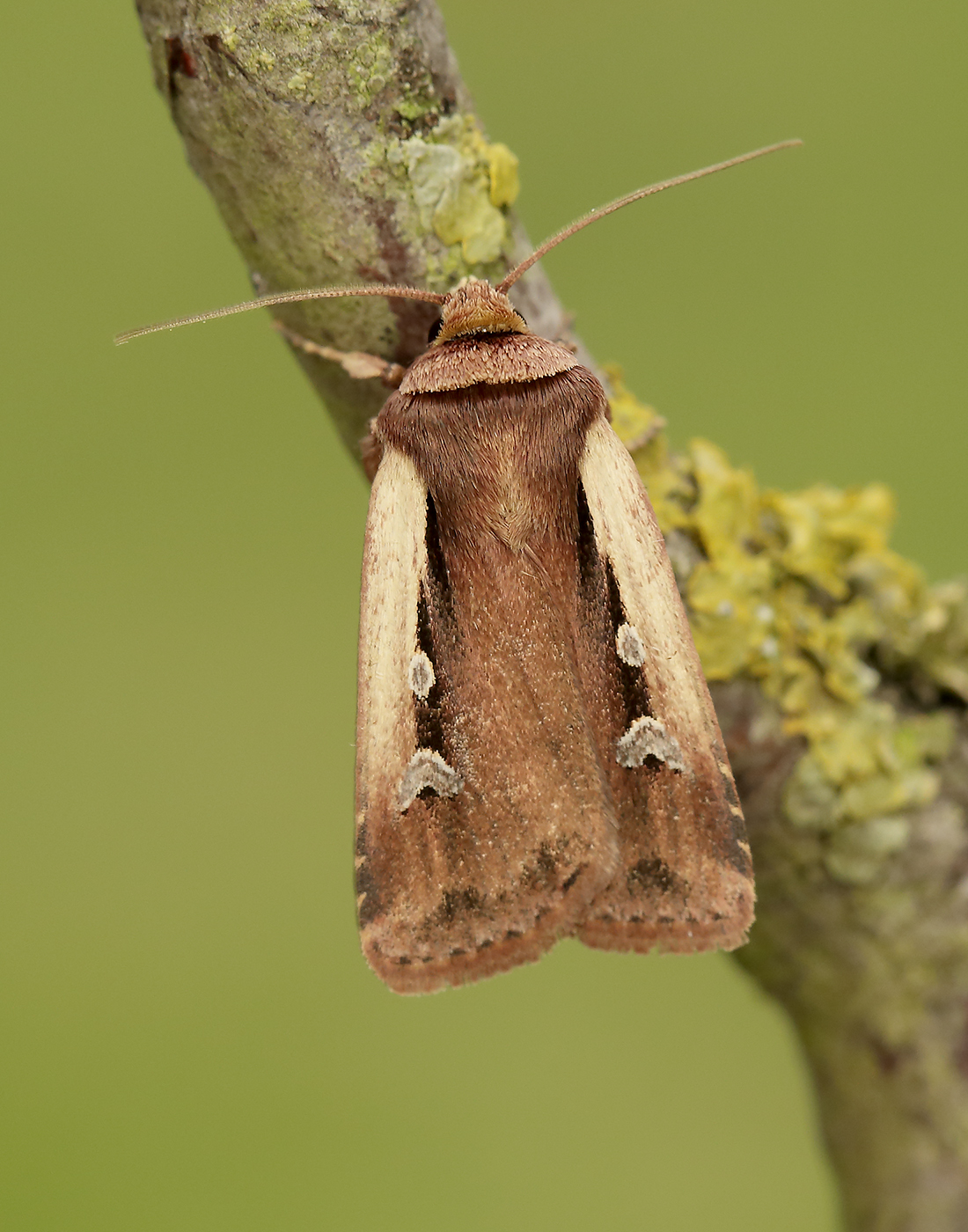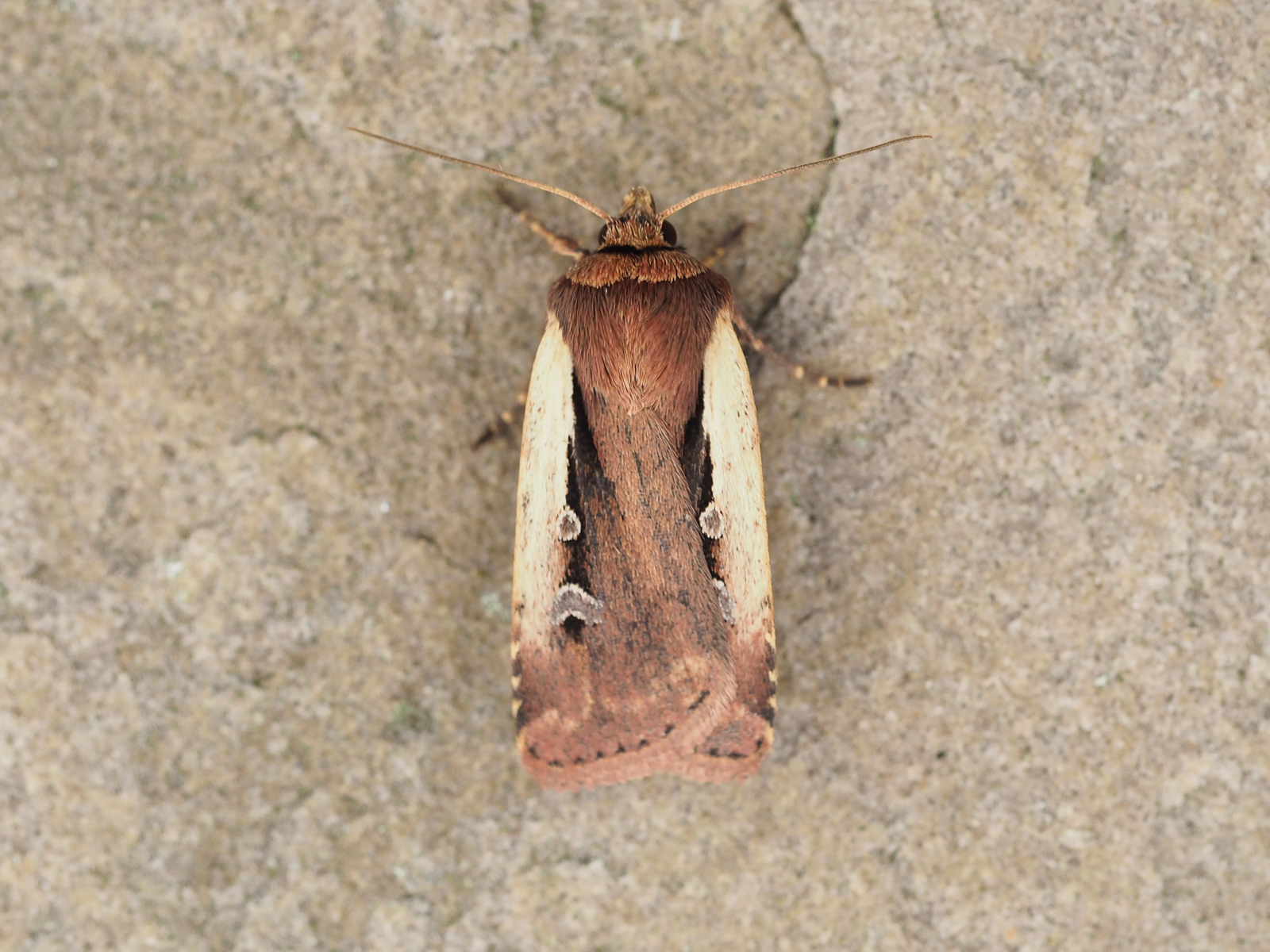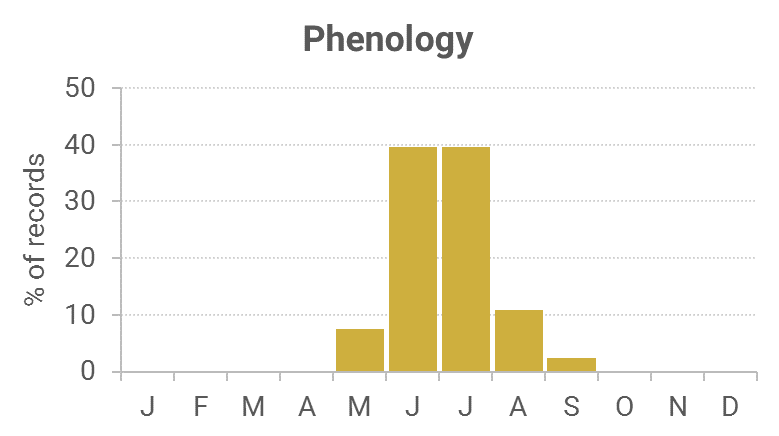Identification
Unmistakable.
Recording Method.
Attracted to light, also comes to sugar and flowers.
Life cycle
Two generations. Overwinters as a pupa. Larvae present June to July, again, September to October, feeding at night.
Larval foodplants
A wide variety of herbaceous plants.
Habitat
A wide range of habitats.
History
Lennon (1863) stated that it was common around the Dumfries area. Douglas Robinson (1870-71) had found it common at sugar in June on Almorness (VC73). K. J. Morton of Edinburgh (1900) whilst on a visit in July 1899 to Wigtownshire had found this species in the Monreith area.
Gordon (1913) stated it to be generally distributed and had found it common at sugar in the woods, on rhododendron, in damp, rushy hollows. Earliest date was 12th June 1897.
Sir Arthur Duncan (1909-84) during his lifetime had found it at Closeburn, Tynron and Castlehill, Dumfries (all VC72). Archibald Russell (1944) listed it as occurring near Gatehouse of Fleet (VC73) during the years 1942-43.
During 1974-93 all seven of the Rothamsted stations recorded it on a regular basis during the period, with a series of records from Irvine House Lodge at Auchenrivock in 1974. Then, from 1992 to 2010 the regular trapped sites of Kirkton and Durisdeer (VC72), Kirkcudbright, Cally Woods, Mersehead RSPB, Old Torr, Carsfad at Dalry (VC73) and Forest Moor (VC74), with a wide scattering of records from elsewhere, made this one of our commonest moths.









